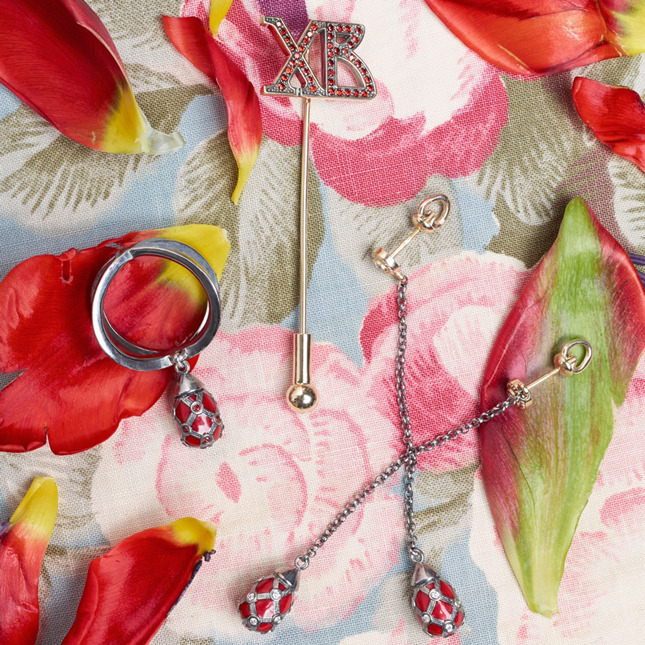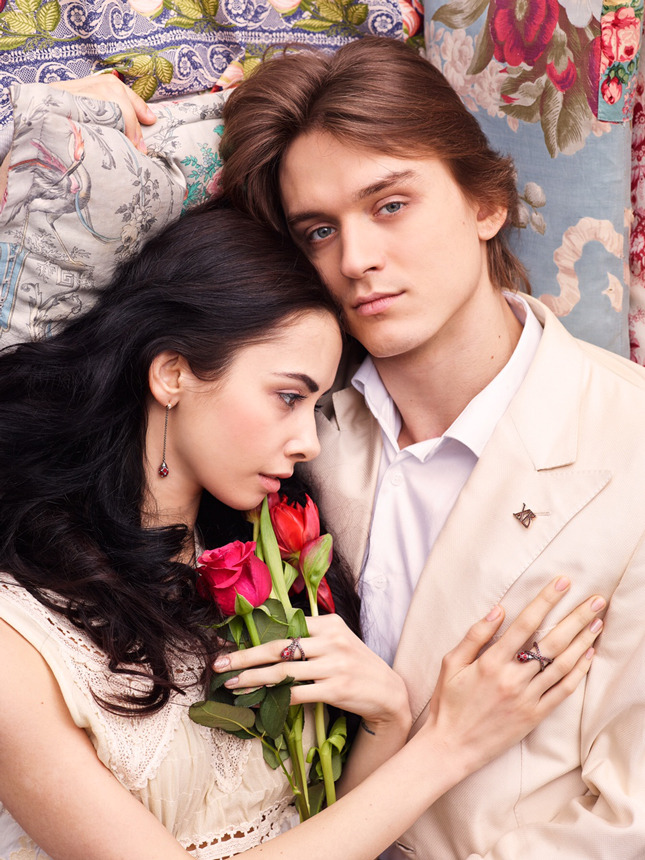Easter mini collection by russian jewelry designer Très Russe

In Tsarist Russia, it was customary to give gifts to children and loved ones for Easter. The custom appeared immediately after the end of the Patriotic War, but after half a century unusual and beautiful little things with the main symbol of the holiday were picked as a present in a variety of families. Ornaments with Easter motifs - most often pendants - created most of the jewelers known before the Revolution. Not surprisingly, a famous jewelry designer Vera Glazunova made a thematic mini-collection.
Here are three novelties: a pin-brooch with an Easter hymn "Christ is Risen!" From silver and gold with corundums or rubies, as well as earrings and a ring with red enamel Easter eggs. Combining gold and silver to convey the vintage mood was a good idea - this is a typical reception of Russian jewelers of the late XIX - early XX century. Fine models that try on novelties - the Bolshoi Theater soloist Denis Rodkin and the ballerina Oksana Sharova are responsible for the atmosphere of love and harmony.
The designer combined gold and silver together, and encrusted the novelties with rubies and corundums. The main idea was to convey in products the reception of Russian masters who created in the late XIX - early XX century.
Jewelry is made in vintage style with Easter motifs and application of enamel techniques. The ring and earrings are decorated with red miniature Easter eggs, and the brooch-pin is made in the form of two capital letters "ХВ", which means "Christ is Risen!".

Très Russe mini collection
On Easter, it is customary to give each other presents with the main symbol of the holiday. Beautiful jewelry with a bright egg was in high demand amongst the Russian aristocracy. Specially for the holiday they ordered interesting things from jewelers. So, the famous series "Faberge Eggs", was created for the royal family and the highest nobility in the period from 1885 to 1917 years.
It's a wonderful custom to give a colorful Easter symbol. Très Russe mini-collection decorations are perfect for the continuation of old traditions. After all, the Easter egg is a red egg. Ring Très Russe Reference.
In Slavic culture eggs are usually painted in red. It embodies life, health, fertility and the sun.

{ (jewel)}
